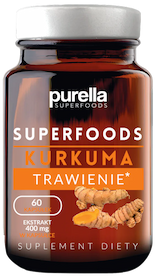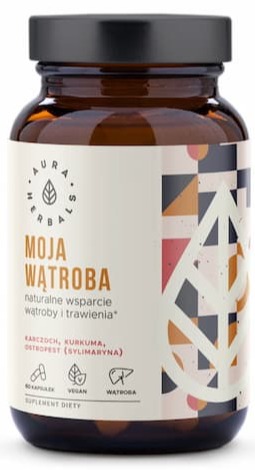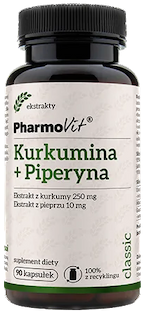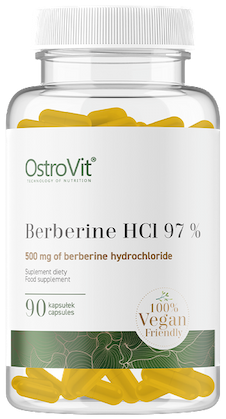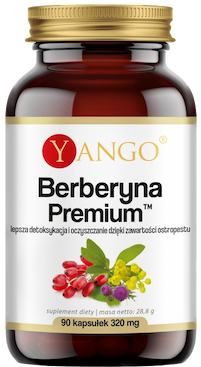Steatotic (fatty) liver - what it is, causes, symptoms
Liver steatosis is caused by too much fat accumulation in this gland.


Learn more about our editorial process
.

Learn more about our editorial process
.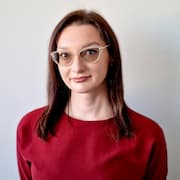

Learn more about our editorial process
.
Why you can trust us
Articles on Natu.Care are written based on scientific research, data from government websites and other reliable sources. The texts are written in cooperation with doctors, nutritionists and other health and beauty experts. Articles are reviewed before publication and during significant updates.
.Learn more about our editorial process
.Information about advertisements
Content on Natu.Care may contain links to products from the sale of which we may receive a commission. When creating content, we adhere to high editorial standards and take care to be objective about the products discussed. The presence of affiliate links is not dictated by our partners, and we select the products we review ourselves completely independently.
.Learn more about our terms and Conditions
.Fatty (or fatty) liver is a condition caused by excessively accumulated fat in this organ. The condition may - or may not - be dangerous. In this article you will find the most important information about fatty liver.
The liver is responsible for, among other things, the metabolism of carbohydrates, the removal of toxins from the bloodstream and the storage of vitamins and minerals. A fairly common condition of this gland is steatosis. Most often, this disease is caused by a poor diet or excessive alcohol consumption. Together with Dr Witold Tomaszewski, MD, PhD, we have prepared information on how to recognise steatosis of the liver early, what to do to prevent the condition, and what is the risk of this disease.
From this article you will learn:
- What is steatosis of the liver and what are the types of this condition .
- What leads to fatty liver .
- What symptoms may indicate a fatty liver .
- How is the fatty liver treated .
- What complications may be associated with fatty liver .
- How to deal with fatty liver by home remedies .

Sprawdź, za co pokochały go tysiące klientek Natu.Care Premium Omega-3ᵀᴳ -15% z kodem BLOG15
Natu.Care Omega-3ᵀᴳ Premium
Natu.Care Omega-3ᵀᴳ Premium dla zdrowia serca, mózgu i odporności. Najlepsza przyswajalność. Optymalna dawka 750 mg. Przebadana przez niezależne laboratorium.
Zobacz więcej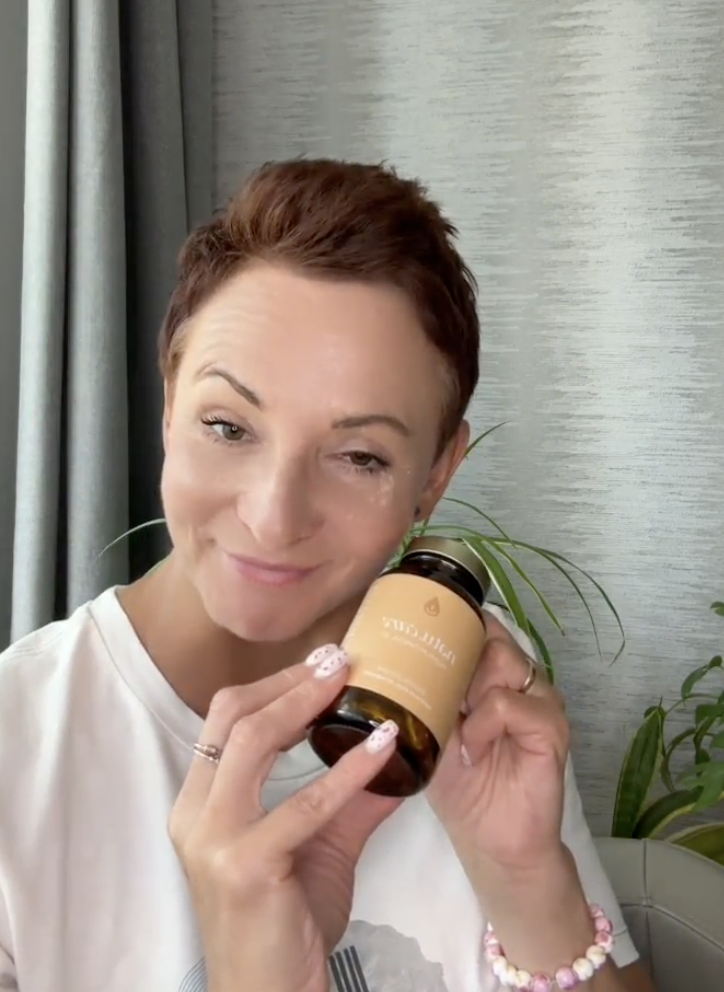
Produkt ma super skład, transparentną etykietę i co dla mnie jest ważne – małe kapsułki do połknięcia. Nie ma też nieprzyjemnego efektu odbijania rybą, który miałam spożywając inne produkty. Widzę znaczną poprawę odporności. Polecam!@Kasia P.
See also:
.- Liver supplements [ranking + pharmacist's opinion] .
- Liver tablets [ranking + pharmacist's opinion]
- The liver [symptoms of diseases + how to care for it and what to avoid]
- Liver tests [what they are and when to perform them] .
- NAC (N-acetylcysteine) what does it help with] .
Fatty liver - what does it mean?
.Fatty (or steaty) liver is a conditionand that is caused by excess fat in this organ. In a healthy liver, only a negligible amount of fat is stored. We can speak of steatosis when the concentration of fat in the liver reaches 5-10% of the organ's weight.
Fatty or fatty liver - which term is correct?
.As Dr Witold Tomaszewski, M.D., explains, 'steatosis' is the only medically correct term. However, there is no shortage of websites on the internet that use these terms interchangeably. We, too, want to reach a wide audience, which is why in this article we will use the terms "fatty" and "steatotic" liver interchangeably.
Please remember, however, that the terms "fatty" and "steatosis" are not the same.
Remember, however, that it is 'fatty liver' that is the correct term.
What are the varieties of fatty liver?
.There are two types of fatty liverand. Nonalcoholic steatohepatitis and alcoholic steatohepatitis. What are the characteristics of these conditions?
Nonalcoholic steatohepatic disease
.Non-alcoholic fatty liver disease (NAFLD) is, as the name suggests, a conditionand that is not related to excessive alcohol consumption. It most commonly occurs in people struggling with overweight or obesity. There are two types of this condition.
- Simple fatty liver disease. Occurs when there is an excessive amount of fat in the liver, but with no (or little) inflammation and no damage to the cells of the organ. In most cases, simple steatosis of the liver does not result in dangerous complications. .
- Non-alcoholic steatohepatitis (NASH). NASH is a much more dangerous condition than simple steatosis. In addition to fat accumulation, there is inflammation or damage to liver cells. In the long term, non-alcoholic steatohepatitis can lead to cirrhosis and even cancer of this organ.
Alcoholic steatohepatitis
.Alcoholic fatty liver disease is caused by excessive consumption ofand alcoholic beverages. The liver breaks down alcohol and can remove it from the body. However, this does not mean that the gland is indestructible - fat is deposited in the liver when alcohol is drunk.
In turn, harmful substances are produced during the subsequent breakdown of alcohol, which can damage liver cells. Furthermore, they also promote inflammation and negatively affect the immune system. Alcoholic steatosis of the liver is one of the earlier stages of diseases of this organ.
When not addressed, continued alcohol consumption will lead to inflammation or cirrhosis of the liver.
Too much alcohol consumption causes damage to liver cells. This results in impaired function of this organ, leading to, among other things, hepatic steatosis..
 .
.
Witold Tomaszewskidoctor of medical sciences
.What are the causes of a fatty liver?
.A number of different factors lead to fatty liver. What are the most common causes of this condition?
.Causes of fatty liverand:
- overweight or obesity, .
- excessive alcohol consumption, .
- older age, .
- increased blood pressure, .
- insulin resistance, .
- type 2 diabetes, .
- taking certain medications (amiodarone, tamoxifen or dilitiazem),
- high blood pressure.
- high levels of triglycerides or cholesterol in the blood, .
If these risk factors for fatty liver are present in you - make an appointment for a test and see if your liver is fatty.
Product description
A combination of turmeric and black pepper extract, or piperine, in the form of easy-to-swallow, vegan capsules. The product effectively supports liver function and fat digestionós, thus reducing unpleasant gastrointestinal discomforts.
Pros and cons
A combination of turmeric and black pepper extract, or piperine, in the form of easy-to-swallow, vegan capsules. The product effectively supports liver function and fat digestionós, thus reducing unpleasant gastrointestinal discomforts.
Additional information
A combination of turmeric and black pepper extract, or piperine, in the form of easy-to-swallow, vegan capsules. The product effectively supports liver function and fat digestionós, thus reducing unpleasant gastrointestinal discomforts.
A combination of turmeric and black pepper extract, or piperine, in the form of easy-to-swallow, vegan capsules. The product effectively supports liver function and fat digestionós, thus reducing unpleasant gastrointestinal discomforts.
Product description
The dietary supplement contains omega-3ᵀᴳ, or omega-3 acids in the form of trójglyceridesów. Scientific studies suggest that this form of fatty acidsós up to 2 times better absorbed than the estersós present in many dietary supplements on the market. This means that you are assured of their effectiveness and of supplying yourself with valuable omega acids.
Fatty acids omega-3 are derived from wild anchovy oil. It is a rich source of healthy fats that are essential for the health of the cardiovascular, immune and nervous systems, as well as the proper function of vision, joints muscles.
Scientific research suggests that wild anchovies are a good source of healthy fats.
Scientific research also suggests that an adequate intake of omega-3 fatty acidsós protects against and supports the treatment of depression and anxiety disorders. In addition, omega-3s influence the hydration and appearance of the skinóry and support healthy sleep.
.
The formula contains a total of 750 mg of EPA+DHA acidsós, which is three times higher than the recommended minimum of 250 mg for the Polish population. Omega-3 TG Premium has studies indicating that its TOTOX is 9, which is a very good result.
Supplementation of omega-3 fatty acidsóis recommended for anyone who does not eat 1–2 portions (approximately 300 g) of oily fish per week. Children during growth, seniors, physically active people, vegans and vegetarians, as well as patients undergoing cardiovascular treatment and prevention of heart disease also have an increased need.
Pros and cons
The dietary supplement contains omega-3ᵀᴳ, or omega-3 acids in the form of trójglyceridesów. Scientific studies suggest that this form of fatty acidsós up to 2 times better absorbed than the estersós present in many dietary supplements on the market. This means that you are assured of their effectiveness and of supplying yourself with valuable omega acids.
Fatty acids omega-3 are derived from wild anchovy oil. It is a rich source of healthy fats that are essential for the health of the cardiovascular, immune and nervous systems, as well as the proper function of vision, joints muscles.
Scientific research suggests that wild anchovies are a good source of healthy fats.
Scientific research also suggests that an adequate intake of omega-3 fatty acidsós protects against and supports the treatment of depression and anxiety disorders. In addition, omega-3s influence the hydration and appearance of the skinóry and support healthy sleep.
.
The formula contains a total of 750 mg of EPA+DHA acidsós, which is three times higher than the recommended minimum of 250 mg for the Polish population. Omega-3 TG Premium has studies indicating that its TOTOX is 9, which is a very good result.
Supplementation of omega-3 fatty acidsóis recommended for anyone who does not eat 1–2 portions (approximately 300 g) of oily fish per week. Children during growth, seniors, physically active people, vegans and vegetarians, as well as patients undergoing cardiovascular treatment and prevention of heart disease also have an increased need.
Additional information
The dietary supplement contains omega-3ᵀᴳ, or omega-3 acids in the form of trójglyceridesów. Scientific studies suggest that this form of fatty acidsós up to 2 times better absorbed than the estersós present in many dietary supplements on the market. This means that you are assured of their effectiveness and of supplying yourself with valuable omega acids.
Fatty acids omega-3 are derived from wild anchovy oil. It is a rich source of healthy fats that are essential for the health of the cardiovascular, immune and nervous systems, as well as the proper function of vision, joints muscles.
Scientific research suggests that wild anchovies are a good source of healthy fats.
Scientific research also suggests that an adequate intake of omega-3 fatty acidsós protects against and supports the treatment of depression and anxiety disorders. In addition, omega-3s influence the hydration and appearance of the skinóry and support healthy sleep.
.
The formula contains a total of 750 mg of EPA+DHA acidsós, which is three times higher than the recommended minimum of 250 mg for the Polish population. Omega-3 TG Premium has studies indicating that its TOTOX is 9, which is a very good result.
Supplementation of omega-3 fatty acidsóis recommended for anyone who does not eat 1–2 portions (approximately 300 g) of oily fish per week. Children during growth, seniors, physically active people, vegans and vegetarians, as well as patients undergoing cardiovascular treatment and prevention of heart disease also have an increased need.
Expert opinion
The dietary supplement contains omega-3ᵀᴳ, or omega-3 acids in the form of trójglyceridesów. Scientific studies suggest that this form of fatty acidsós up to 2 times better absorbed than the estersós present in many dietary supplements on the market. This means that you are assured of their effectiveness and of supplying yourself with valuable omega acids.
Fatty acids omega-3 are derived from wild anchovy oil. It is a rich source of healthy fats that are essential for the health of the cardiovascular, immune and nervous systems, as well as the proper function of vision, joints muscles.
Scientific research suggests that wild anchovies are a good source of healthy fats.
Scientific research also suggests that an adequate intake of omega-3 fatty acidsós protects against and supports the treatment of depression and anxiety disorders. In addition, omega-3s influence the hydration and appearance of the skinóry and support healthy sleep.
.
The formula contains a total of 750 mg of EPA+DHA acidsós, which is three times higher than the recommended minimum of 250 mg for the Polish population. Omega-3 TG Premium has studies indicating that its TOTOX is 9, which is a very good result.
Supplementation of omega-3 fatty acidsóis recommended for anyone who does not eat 1–2 portions (approximately 300 g) of oily fish per week. Children during growth, seniors, physically active people, vegans and vegetarians, as well as patients undergoing cardiovascular treatment and prevention of heart disease also have an increased need.
Aura Herbals My Liver
Product description
Aura Herbals My Liver is a dietary supplement thatós composed of a synergistic combination of extractsós and substances to support liver health. It acts as a protective shield thanks to its cleansing, antioxidant and anti-inflammatory properties. By strengthening the cell membranesór, the product facilitates the regeneration of damaged liver tissues, maximising liver performance.
The supplement benefits from a synergy of ingredientsós, such as turmeric and artichoke, which work togetheróly to support liver functions such as detoxification, neutralising free radicalsós, and supporting healthy fat synthesis and transport.
Aura Herbals Moja Wątroba is recommended for people whoóre exposed to daily stress, environmental or food toxins, as well as those seeking to improve overall liver health.
Pros and cons
Aura Herbals My Liver is a dietary supplement thatós composed of a synergistic combination of extractsós and substances to support liver health. It acts as a protective shield thanks to its cleansing, antioxidant and anti-inflammatory properties. By strengthening the cell membranesór, the product facilitates the regeneration of damaged liver tissues, maximising liver performance.
The supplement benefits from a synergy of ingredientsós, such as turmeric and artichoke, which work togetheróly to support liver functions such as detoxification, neutralising free radicalsós, and supporting healthy fat synthesis and transport.
Aura Herbals Moja Wątroba is recommended for people whoóre exposed to daily stress, environmental or food toxins, as well as those seeking to improve overall liver health.
Additional information
Aura Herbals My Liver is a dietary supplement thatós composed of a synergistic combination of extractsós and substances to support liver health. It acts as a protective shield thanks to its cleansing, antioxidant and anti-inflammatory properties. By strengthening the cell membranesór, the product facilitates the regeneration of damaged liver tissues, maximising liver performance.
The supplement benefits from a synergy of ingredientsós, such as turmeric and artichoke, which work togetheróly to support liver functions such as detoxification, neutralising free radicalsós, and supporting healthy fat synthesis and transport.
Aura Herbals Moja Wątroba is recommended for people whoóre exposed to daily stress, environmental or food toxins, as well as those seeking to improve overall liver health.
Pharmovit Curcumin + Piperine
Product description
Curcumin + Piperine Pharmovit is a dietary supplement that supports liver health, fatódigestion, joints and the immune system. Long Oyster Extract provides up to 237.50 mg of curcumin, while Black Pepper Fruit Extract contains 9.50 mg of piperine.
The supplement has no fillers or colourings
.Pros and cons
Curcumin + Piperine Pharmovit is a dietary supplement that supports liver health, fatódigestion, joints and the immune system. Long Oyster Extract provides up to 237.50 mg of curcumin, while Black Pepper Fruit Extract contains 9.50 mg of piperine.
The supplement has no fillers or colourings
.Additional information
Curcumin + Piperine Pharmovit is a dietary supplement that supports liver health, fatódigestion, joints and the immune system. Long Oyster Extract provides up to 237.50 mg of curcumin, while Black Pepper Fruit Extract contains 9.50 mg of piperine.
The supplement has no fillers or colourings
.Curcumin + Piperine Pharmovit is a dietary supplement that supports liver health, fatódigestion, joints and the immune system. Long Oyster Extract provides up to 237.50 mg of curcumin, while Black Pepper Fruit Extract contains 9.50 mg of piperine.
The supplement has no fillers or colourings
.Product description
Berberine supports sugar and insulin metabolism, the cardiovascular system and liver function. It may support weight loss, protect the liver and have a positive effect on the gut microbiome.
Pros and cons
Berberine supports sugar and insulin metabolism, the cardiovascular system and liver function. It may support weight loss, protect the liver and have a positive effect on the gut microbiome.
Additional information
Berberine supports sugar and insulin metabolism, the cardiovascular system and liver function. It may support weight loss, protect the liver and have a positive effect on the gut microbiome.
Berberine supports sugar and insulin metabolism, the cardiovascular system and liver function. It may support weight loss, protect the liver and have a positive effect on the gut microbiome.
Product description
A dietary supplement with berberine, whichóra has a positive effect on sugar-insulin balance and reduces the risk of heart disease. It can support the weight loss process.
Pros and cons
A dietary supplement with berberine, whichóra has a positive effect on sugar-insulin balance and reduces the risk of heart disease. It can support the weight loss process.
Additional information
A dietary supplement with berberine, whichóra has a positive effect on sugar-insulin balance and reduces the risk of heart disease. It can support the weight loss process.
A dietary supplement with berberine, whichóra has a positive effect on sugar-insulin balance and reduces the risk of heart disease. It can support the weight loss process.
Product description
Preparation with standardised extracts with herbal ingredients thatóre positively influencing the functioning of the body. Curcumin improves digestion, has an antioxidant effect and supports jointós health. Ginger helps to reduce inflammationólation, has an anti-bioactive effect and is rich in antioxidants. Piperine increases the bioavailability of someós food substances, has anti-inflammatory effects and increases thermogenesis in the body.
Pros and cons
Preparation with standardised extracts with herbal ingredients thatóre positively influencing the functioning of the body. Curcumin improves digestion, has an antioxidant effect and supports jointós health. Ginger helps to reduce inflammationólation, has an anti-bioactive effect and is rich in antioxidants. Piperine increases the bioavailability of someós food substances, has anti-inflammatory effects and increases thermogenesis in the body.
Additional information
Preparation with standardised extracts with herbal ingredients thatóre positively influencing the functioning of the body. Curcumin improves digestion, has an antioxidant effect and supports jointós health. Ginger helps to reduce inflammationólation, has an anti-bioactive effect and is rich in antioxidants. Piperine increases the bioavailability of someós food substances, has anti-inflammatory effects and increases thermogenesis in the body.
Fatty liver - symptoms
.Fatty liver rarely produces specific symptoms in the early stages. Nevertheless, we can distinguish certain symptoms that should make us light a red light.
Symptomsand fatty liver:
- fatigue, .
- pain in the right upper abdomen,
- pain in the right upper abdomen.
- unexplained weight loss, .
- nausea, .
- loss of appetite, .
- general weakness of the body, .
- disorientation, .
- red or yellow patches on the skin,
- disorientation,
- general weakness of the body,
- disorientation.
- swelling of the abdomen (ascites), .
- enlarged blood vessels under the skin, .
Note!
.Remember that the above symptoms may or may not indicate steatosis of the liver. Only a doctor can diagnose this condition. Are you noticing these symptoms in yourself? Make an appointment for a check-up.
Diagnosis of steatosis of the liver
.Diagnosing steatosis disease is not straightforwardand. Most of the symptoms that this condition gives are very similar to those of other diseases. Most commonly, your doctor will take three steps to see if you are struggling with fatty liver.
Doctor's history
.The medical history is crucial as part of the diagnosis of fatty liver. Your doctor will ask you about your alcohol consumption, diet, medications you are taking and your medical history. This will enable the specialist to determine whether alcoholic or non-alcoholic fatty liver disease is likely to be present in your case.
Physical examination
.The next step to allow your doctor to determine whether you have fatty liver disease is a physical examination. The specialist will examine your body and check your weight and height. The doctor will look for two main signs of a fatty liver:
- an enlarged organ, .
- symptoms of cirrhosis (e.g. jaundice). .
Advanced investigations
.When it is likely, that you are struggling with steatohepatic disease, your doctor will refer you for advanced tests. These include, in the first instance, blood tests - e.g. a blood count or tests to check liver function.
Otherwise, you will need to have a liver function test.
In other cases, imaging tests will be necessary. These make it possible to determine whether there is fat in the liver. Sometimes a liver biopsy proves necessary. This examination allows the diagnosis to be definitively confirmed and the severity of the damage to the organ to be determined.
An excellent test whose diagnostic value can be comparable to a biopsy is the FibroScan test. It too can help in the final diagnosis of hepatic steatosis..
 .
.
Witold Tomaszewskidoctor of medical sciences
.
For Liver Regeneration° Smart Supplement
.Formula with silymarin, folic acid, phospholipids, choline and omega-3 acids supports liver regeneration.
What are the risks of a fatty liver?
.Most people undergo steatohepatic disease liver disease without major problems. Despite this, 7 to 30%and of patients with this condition experience worsening health.
The consequences of untreated fatty liver can be divided into 3 stages:
.- Hepatic inflammation, through which the tissue of the organ is damaged. This condition is referred to as steatohepatitis.
- The liver is damaged.
- In the place of the damaged tissue, scar tissue forms - fibrosis of the liver occurs.
- The liver is damaged.
- The extensive scar tissue takes the place of healthy tissue - liver fibrosis turns into cirrhosis. .
Is steatosis of the liver fatal?
.No, fatty liver itself is not a fatal condition. However, if left untreated, it can quickly develop into cirrhosis - a very serious disease. Therefore, it is very important that steatosis of the liver is diagnosed and addressed as soon as possible.
What is cirrhosis of the liver?
.Carrhosis is an advanced stage ofand fibrosis of this organ. It is most often caused by various diseases such as steatosis or inflammation. Any attempt to repair the liver (after it has been damaged) leads to the formation of scar tissue.
At some point there is so much of it that liver function becomes impossible. Cirrhosis at a late stage can even be life-threatening for the patient.
Treatment of cirrhosis in the late stages of the disease.
Treatment of fatty liver
.There are currently no drugsand for fatty liver, however, some agents are in clinical trials. Therefore, we can expect new substances to support patients with this condition in the coming years. The current treatment of fatty liver involves several simple steps.
- Lose weight. Healthy weight loss (by as little as 3-5% of body weight) can help reduce the fat content, as well as reduce, inflammation and scarring in the liver. In some cases, it is necessary to surgically remove fat from this organ.
- Resisting from alcohol. Avoiding alcoholic beverages is extremely helpful in reducing progressive liver damage. In some cases, giving up alcohol can even reverse some of the liver changes.
- Loweringandcholesterol levels. A healthy diet (full of vegetables and fruit), physical activity and selected medications (only those recommended by a doctor) can lower cholesterol levels in the body.
- ControlandDiabetes (if present). Diabetics should strictly follow their doctor's instructions regarding medication. They must also closely monitor their blood sugar levels. .
If complications of steatohepatitis develop, such as liver failure or cirrhosis, an organ transplant may be necessary.
Fatty liver - home remedies
.An appropriate lifestyle can have a positive effect on a fatty liver. What are some home remedies to support the treatment of this condition?
- Diet. A balanced diet is the key to a healthy liver. The right diet can help you lose weight and also help restore proper cholesterol levels. Instead of processed or fatty foods, choose vegetables, fruit or whole grains and control your calorie intake. .
- Physical activity.Movement is health. The adage is apt, and just 30 minutes of exercise each day will help in the fight against overweight or a fatty liver. Half an hour is only 2 per cent of your entire day. Will you devote that much to your health? .
- Protect your liver. Avoiding alcohol and unnecessary drugs or supplements prevents liver damage. If you decide to take any remedies (the aforementioned drugs or supplements), always follow the manufacturer's recommendations, and ideally, consult your doctor about your plans.
What should you eat to combat steatosis of the liver?
.The liver diet is a way of eating that positively affects the function of this organ. The right diet can support the treatment of steatohepatic disease.
Patients with steatohepatitis should take care to consume:
- cavaand, .
- spinach , .
- legumes (lentils, chickpeas, soybeans, peas), .
- fatty fish - rich in omega-3 acids omega-3 (salmon, sardines, tuna), .
- whole grain flakesand, .
- nuts , .
- olive oils, .
- chocolate (in limited quantities), .
- lemon juice, .
- green and black tea, .
- ginger,
- green tea, and black tea.
- curcumaand, .
- sunflower seed (due to its vitamin E content),
- garlicand. .
Other fat-soluble vitamins also are crucial for liver health. Would you like to learn more about them? Take a look at these articles:
- Vitamin A - properties, effects, occurrence, deficiency symptoms
- Vitamin D3 - action, dosage, supplementation .
- Vitamin K - where it occurs, what it helps, deficiency symptoms
What not to eat with a fatty liver?
.Eating the above foods is not enough. Specific foods should also be (at least partially) eliminated from the diet.
In steatohepatic liver disease, you should not consume:
.- alcoholand, .
- refined cereals (white bread or rice), .
- red meat , .
- sugar (e.g. sweets), .
- trans fats (e.g. crisps), .
Note!
.If you have liver problems and want to change your diet - it is best that you contact a nutritionist. It is the specialist who has the knowledge to be able to provide you with the right help.
See also:
- Thyroid tests [which ones to do + standards + results] .
- Blood tests [how often to perform + how to prepare] .
- Cortisol testing [norms and indications + where to perform]
- Fatty (fatty) liver [what it is + causes + symptoms] .
- Saturation [norms + test + symptoms of low saturation] .
- Pulse oximeter [norms + results + which one to choose]
Summary
.Remember from this article some of the most important information:
.- Fatty or steatosis of the liver is a disease caused by an excess of fat in this organ.
- It is a disease of the liver.
- There is a distinction between non-alcoholic and alcoholic steatosis of the liver.
- There is a distinction between alcoholic and non-alcoholic steatosis of the liver.
- The causes of hepatic steatosis include being overweight, excessive alcohol consumption or older age. .
- Some of the symptoms of a fatty liver include fatigue, pain in the right upper abdomen or nausea. .
- Fatty liver in its early stages is not very dangerous, but if left untreated it can lead to cirrhosis and even cancer of this gland. .
- There are no cures for fatty liver - treatment includes, among other things, appropriate diet, giving up alcohol or lowering cholesterol. .
- People suffering from fatty liver should eat fatty fish, legumes or whole grain cereals, among other foods.
- There is no cure for fatty liver.
- A fatty liver is negatively affected by, among other things, alcohol, red meat or trans fats.
FAQ
.How to de-fat the liver quickly
.Basic to fattying the liver is a change in diet and lifestyle:
- avoid zoonotic fats and processed foods; .
- make sure that up to three-quarters of your plate at each meal consists of a variety of vegetables;
- include healthy vegetables in your diet.
- include healthy fats and unsaturated fatty acids in your diet - including omega acids; .
- get regular physical activity - even 30-45 minutes of light fatigue a day; .
- drink 2-3 cups of black coffee a day - the compounds in it will help regenerate the liver; .
- try to lose weight and control co-morbidities - especially diabetes, lipid disorders, atherosclerosis and heart disease; .
Does a fatty liver regenerate itself?
.Yes, fatty liver is a reversible condition and the organ itself has the capacity to regenerate. The treatment time for a fatty liver depends on the causes and extent of the damage. The sooner you get a diagnosis, make changes to your diet and habits, and start supporting your liver supplements, the sooner it will heal.
Are bananas good for the liver?
.Bananas are a valuable source of vitamin B6, magnesium and vitamin C. These fruits are healthy and do not adversely affect the liver. Limit their intake to no more than two pieces per day. Excess simple sugars in bananas can be harmful to the liver and lead to fatty liver, for example. This does not mean that bananas are bad - the bigger problem is highly processed foods and 'sugar bombs' (sweets, snacks, large amounts of honey, etc.)
What bread for steatosis of the liver?
.People with fatty liver should eat whole-grain bread instead of white bread. Research suggests that less processed bread has a positive effect on treating fatty liver and liver enzyme levels. Limit or give up white bread and rolls.
See also: Liver tests - what are they and when is it worth doing them?
.What is stool with a diseased liver?
.The normal stool of a healthy person should be brown, although the colour may vary depending on your diet (for example, your stool may be alarmingly red after you eat a lot of beetroot). Unusual colours can be indicative of specific health problems. In the case of a diseased liver, the most common colour will be pale yellow. If your stool has been a worrying colour for a long time - see your doctor.
Check out: Tablets for the liver - 12 suggestions from a pharmacist
.How many degrees of hepatic steatosis are there?
There are usually three degrees of hepatic steatosis:
.
- moderate: involves 10-20% of liver cells;
.
- severe: involves more than 20% of cells;
.
The degree of hepatic steatosis is assessed by histopathological examination of liver samples taken at the time of biopsy or by imaging studies: ultrasound or tomography.
Is steatosis of the liver cirrhosis?
.No, they are two different diseases, however steatosis can lead to cirrhosis. Cirrhosis is a descent in which successive liver functions 'shut down'. It is the result of ongoing damage that leads to permanent scarring and damage to liver tissue. Cirrhosis usually leads to serious complications such as jaundice, gastrointestinal bleeding, abdominal swelling (known as ascites and even multiple organ failure).
Check out: How to take care of your health - 13+ tips from a doctor, nutritionist and psychologist
.Resources
.See all
.Alcohol-related liver disease. (2017, October 20). Nhs.Uk. https://www.nhs.uk/conditions/alcohol-related-liver-disease-arld/
Cirrhosis-Symptoms and causes. (n.d.). Mayo Clinic. Retrieved March 17, 2023, from https://www.mayoclinic.org/diseases-conditions/cirrhosis/symptoms-causes/syc-20351487
Fatty Liver Disease. (n.d.-a). [Text]. National Library of Medicine. Retrieved March 17, 2023, from https://medlineplus.gov/fattyliverdisease.html
Fatty Liver Disease: Risk Factors, Symptoms, Types & Prevention. (n.d.-b). Cleveland Clinic. Retrieved March 17, 2023, from https://my.clevelandclinic.org/health/diseases/15831-fatty-liver-disease
Fowler, P. (n.d.). Fatty Liver Disease: Alcoholic and Non-Alcoholic Types. WebMD. Retrieved March 17, 2023, from https://www.webmd.com/hepatitis/fatty-liver-disease
Maher, J. J. (1997). Exploring Alcohol's Effects on Liver Function. Alcohol Health and Research World, 21(1), 5-12.
Mega, A., Marzi, L., Kob, M., Piccin, A., & Floreani, A. (2021). Food and Nutrition in the Pathogenesis of Liver Damage. Nutrients, 13(4), Article 4. https://doi.org/10.3390/nu13041326
Mokhtari, E., Farhadnejad, H., Salehi-Sahlabadi, A., Najibi, N., Azadi, M., Teymoori, F., & Mirmiran, P. (2021). Spinach consumption and nonalcoholic fatty liver disease among adults: A case-control study. BMC Gastroenterology, 21(1), 196. https://doi.org/10.1186/s12876-021-01784-8
Nonalcoholic Fatty Liver Disease. (2019, November 19). https://www.hopkinsmedicine.org/health/conditions-and-diseases/nonalcoholic-fatty-liver-disease
Non-alcoholic fatty liver disease (NAFLD). (2017, October 19). Nhs.Uk. https://www.nhs.uk/conditions/non-alcoholic-fatty-liver-disease/
.Nonalcoholic fatty liver disease-Symptoms and causes. (n.d.). Mayo Clinic. Retrieved March 17, 2023, from https://www.mayoclinic.org/diseases-conditions/nonalcoholic-fatty-liver-disease/symptoms-causes/syc-20354567
Ross, A. B., Godin, J.-P., Minehira, K., & Kirwan, J. P. (2013). Increasing Whole Grain Intake as Part of Prevention and Treatment of Nonalcoholic Fatty Liver Disease. International Journal of Endocrinology, 2013, e585876. https://doi.org/10.1155/2013/585876
Soleimani, D., Paknahad, Z., & Rouhani, M. H. (2020). <p>Therapeutic Effects of Garlic on Hepatic Steatosis in Nonalcoholic Fatty Liver Disease Patients: A Randomized Clinical Trial</p>. Diabetes, Metabolic Syndrome and Obesity, 13, 2389-2397. https://doi.org/10.2147/DMSO.S254555
.The effect of coffee consumption on the non-alcoholic fatty liver disease and liver fibrosis: A meta-analysis of 11 epidemiological studies-ScienceDirect. (n.d.). Retrieved 17 March 2023, from https://www.sciencedirect.com/science/article/pii/S1665268120301691
Vitamin E has a beneficial effect on nonalcoholic fatty liver disease: A meta-analysis of randomised controlled trials-ScienceDirect. (n.d.). Retrieved 17 March 2023, from https://www.sciencedirect.com/science/article/abs/pii/S0899900714005188
Editorials
Meet the team

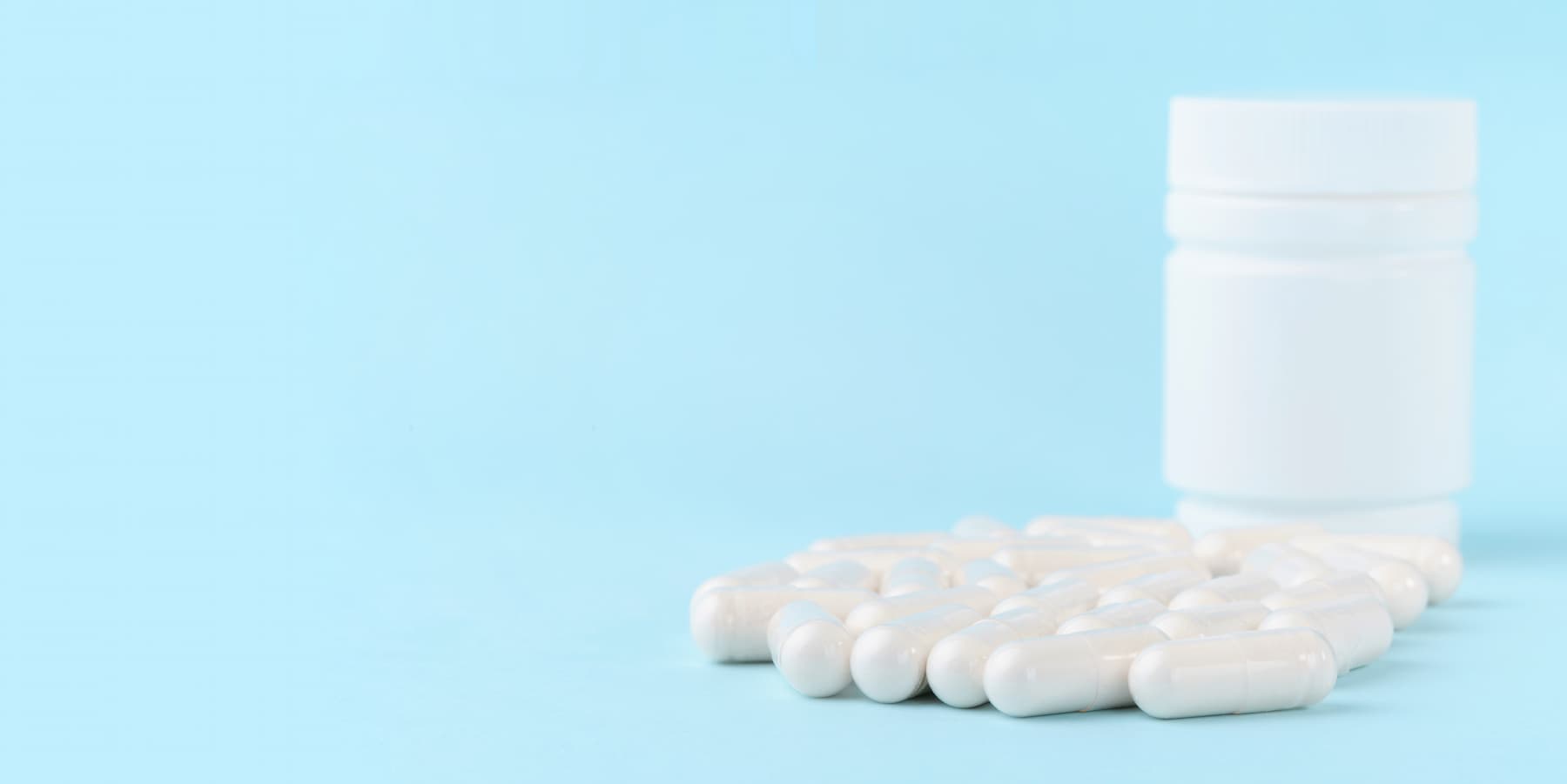
Chondroitin helps the joints and other elements of the body.

Glutathione is one of the most potent antioxidants for supporting the body's health. Find out how it works and where to get it from.

See why hip joints hurt and how to treat their ailments.
